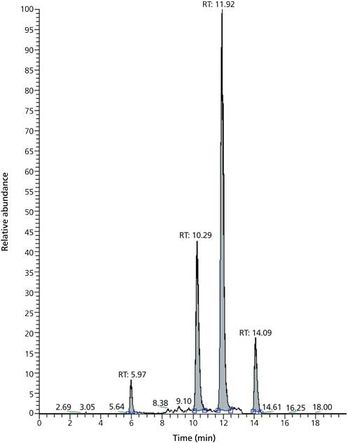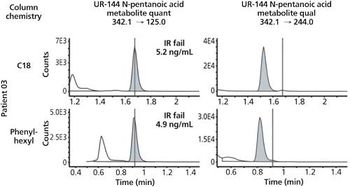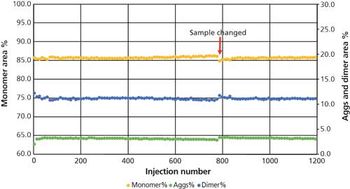
Special Issues
Superficially porous particles with their favorable chromatographic properties were a great advance for liquid chromatography. The speed they enable is exemplified by a LC–MS method of analysis for four mycotoxins, spanning log P values from -0.7 to 3.6, with an analysis time of just over 8 min and excellent performance. Another issue is the separation of closely related mycotoxins, like 3- and 15-acetyldeoxynivalenol. With the common C18 chemistries they coelute and identification and quantification can only be achieved through differing MS-MS signals. Now, with the newer pentafluorophenyl chemistries these two mycotoxins can be separated by LC and MS quantification of them has become much more precise.







